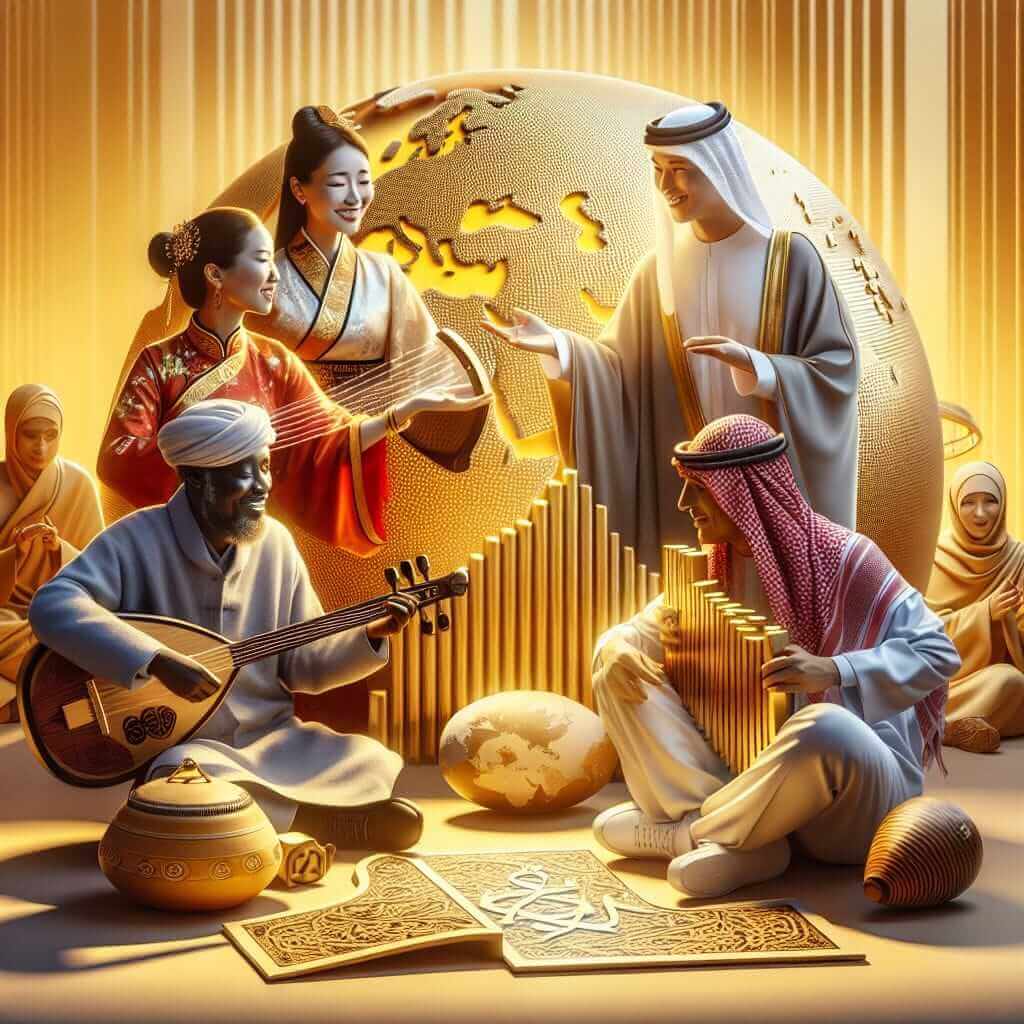Cultural diplomacy, an essential component of soft power, has increasingly become significant in shaping international relations. The term refers to the way countries use cultural interactions to improve ties, promote mutual understanding, and foster peace. Cultural diplomacy can include arts, education, language exchange, and many other cultural aspects. As international relationships become more complex, understanding the influence of cultural diplomacy is critical for comprehending global dynamics.

Sample IELTS Writing Task 2 Questions
- Some people believe cultural diplomacy is more effective than traditional diplomatic approaches in fostering international relations. To what extent do you agree or disagree?
- Discuss the impact of cultural exchanges, such as student exchange programs, on international relations.
- How does cultural diplomacy contribute to resolving conflicts between countries? Provide relevant examples to support your view.
Selecting a Sample Task for Writing
For this exercise, we will use the first question: “Some people believe cultural diplomacy is more effective than traditional diplomatic approaches in fostering international relations. To what extent do you agree or disagree?”
Analyzing the Task
This essay prompt asks you to evaluate the effectiveness of cultural diplomacy compared to traditional diplomatic methods in fostering international relations. You must express your opinion clearly, either agreeing, disagreeing, or presenting a balanced viewpoint. It’s crucial to provide reasons and examples to back up your perspective.
Sample Response
Cultural diplomacy, encompassing activities such as arts, education, and cultural exchanges, plays a pivotal role in promoting international relations. However, whether it is more effective than traditional diplomatic approaches, such as political negotiations and economic treaties, is a subject of debate. While cultural diplomacy offers significant benefits, I contend that a combination of both approaches is necessary for robust and effective international relations.
To begin with, cultural diplomacy has proven to be a powerful tool in fostering mutual understanding and tolerance among nations. Programs like student exchanges, international art exhibitions, and language courses allow individuals from different countries to engage directly with one another, breaking down stereotypes and building friendships. For instance, Fulbright Scholarship programs have long facilitated cultural exchange, opening dialogue and cooperation between the United States and various other nations. Such initiatives lay a strong foundation for peaceful interactions.
Moreover, cultural activities often resonate more deeply with the general population compared to political agreements, which tend to be restricted to governmental levels. When ordinary citizens develop a sense of connection with another culture, it paves the way for more enduring relationships between countries. For example, the Japanese government’s support of Japanese anime and manga abroad has created a global fan base, enhancing Japan’s cultural influence significantly.
Despite these advantages, traditional diplomacy cannot be downplayed. Political and economic agreements provide the structure within which cultural diplomacy can flourish. Treaties, trade agreements, and political alliances create the stable environment necessary for cultural interactions to thrive. In essence, without the frameworks established by traditional diplomacy, cultural exchanges might lack the necessary official backing and resources to be effective.
In conclusion, while cultural diplomacy provides profound contributions to international relations by promoting mutual understanding and grassroots connections, it should not be viewed as superior to traditional diplomatic approaches. Instead, a synergistic relationship between cultural and traditional diplomacy is essential. Together, they form a comprehensive strategy for fostering robust and long-lasting international relations.
Word Count: 312
Key Considerations When Writing
- Balanced Viewpoint: When asked to compare or discuss certain approaches, ensure you present a balanced argument if possible. Weigh both sides before concluding.
- Relevant Examples: Use concrete examples to support your points. This strengthens your essay and makes your argument more persuasive.
- Coherent Structure: Follow a clear structure with an introduction, body paragraphs (each focusing on a specific point), and a concise conclusion.
Vocabulary and Grammar Tips
Vocabulary to Remember
- Pivotal (adj) /ˈpɪvətl/: of crucial importance – “Cultural diplomacy plays a pivotal role…”
- Foster (v) /ˈfɒstər/: to encourage the development of something – “fostering international relations.”
- Mutual Understanding (n) /ˈmjuːtʃuəl ʌndərˈstændɪŋ/: shared knowledge and acceptance – “promoting mutual understanding.”
- Stereotype (n) /ˈstɛrɪəˌtaɪp/: a widely held but fixed image of a particular group – “breaking down stereotypes.”
- Enduring (adj) /ɪnˈdjʊərɪŋ/: lasting over a period of time – “more enduring relationships.”
Grammar Tips
- Complex Sentences: Use complex sentences to demonstrate your proficiency in handling higher-level grammar.
Example: While cultural diplomacy offers significant benefits, it ought to be complemented by traditional diplomatic measures. - Transitions and Cohesion: Use cohesive devices and transition words to ensure your essay flows smoothly.
Example: Moreover, In conclusion, despite, however.
Conclusion
Understanding the influence of cultural diplomacy on international relations allows for the exploration of both innovative and traditional methods in forging global ties. By practicing writing on this topic, students can explore current global dynamics while enhancing their essay-writing skills for the IELTS exam. Additional related topics might include the influence of global sporting events on international relations or the benefits of learning foreign languages. These exercises will further sharpen your ability to thoughtfully address diverse questions in the actual exam.
For further practice, consider exploring how the influence of cultural heritage on tourism or the role of cultural exchange in global understanding shapes international relationships.